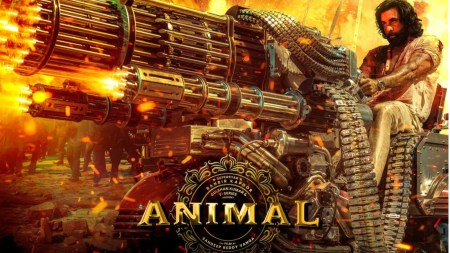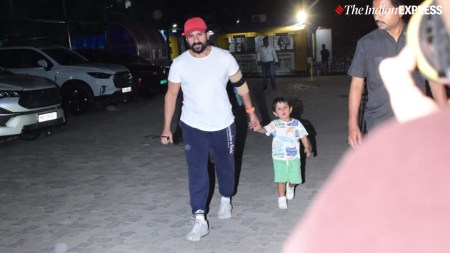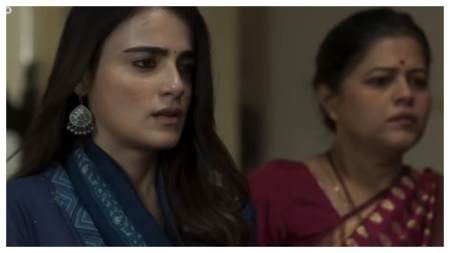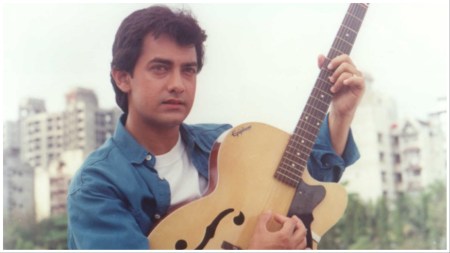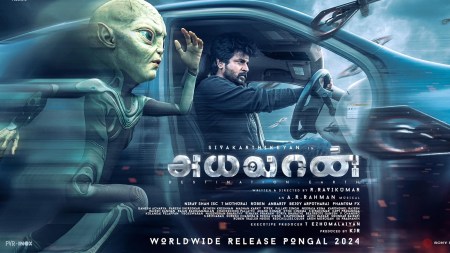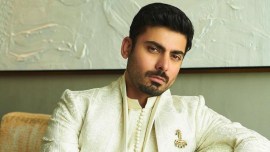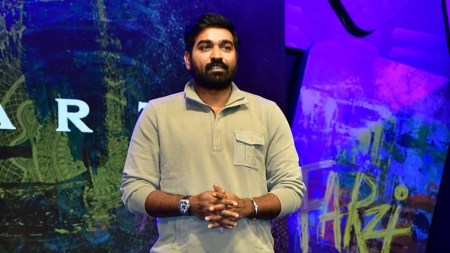On the afternoon his debut film Kho Gaye Hum Kahan released on Netflix, director Arjun Varain Singh was at Siddhivinayak temple with his girlfriend. The coming-of-age drama headlined by Ananya Panday, Siddhant Chaturvedi and Adarsh Gourav had dropped on the streamer and an executive at Excel Entertainment joked with him that the film was probably looking at one-star reviews. “You better pray hard!” he was told.
By the time Arjun came out of the temple, his phone was buzzing with notifications which carried the good news — the film was receiving positive reviews and had especially struck a chord with Gen Z, the subjects of his debut which talks about three best friends in their 20s navigating life and striving to balance their online identities with their true selves.

Indian Express Entertainment is now on WhatsApp Channels. Follow us for the latest news, interviews, reviews, photos and more.
In an interview with Indianexpress.com, Arjun, who was a DA (directors assistant) in Zoya Akhtar’s Gully Boy, dissects what went behind some of the creative calls of the film, avoiding any romantic dent between the leads, the funny story that inspired its title and how he mounted Kho Gaye Hum Kahan with the intention to freeze in time the ever-changing Mumbai and its quaint neighborhood Bandra.
Edited excerpts.
View this post on Instagram
A post shared by Tiger Baby (@tigerbabyofficial)
How many influencers reached out to you after the film?
(Laughs) Netflix had actually organised a screening with influencers! The cool thing was they actually appreciated the film. A lot of then reached out and said a lot of wonderful things and how they could–not specifically with Lala–connect thematically with it.
The chemistry between Ananya, Siddhant and Adarsh feel so pleasant and very lived in. How was that achieved?
Sid and Ananya already knew each other from Gehraiyaan. Adarsh was the new person in the equation. Once I had all three of them signed, I called them over to my place and we hung out, from 9 pm till 4 am, just talking about each other’s lives, script, characters and setting it up. But the real transformation happened later. All three of them had to become really good friends in order for it to translate on screen. If they were not real friends, it might feel forced. Over the course of pre-production, they constantly met, hung out with the crew, had a lot of get togethers and did workshops as well. But what truly cemented it was when we went to Goa.
It was a small trip, but they went to the beach together, restaurants together, played together. You see all that stuff in the opening montage. I pitched it to the producers saying, this is something we are going to shoot in Goa as it is important for the movie but at the same time the friendship angle between the three of them was very important for me. They had be to real friends before the shooting.
View this post on Instagram
A post shared by Netflix India (@netflix_in)
It is also refreshing to see a platonic friendship on screen…
That was something we definitely wanted to do on a writing level. But also, I have many friends with whom I don’t have a romantic equation. They are just my friends and that is a normal thing to have, but we never just see that on screen. I knew it would be refreshing, so would the pairing of two boys and one girl. We usually see (films) with three boys. In college groups, boys and girls are together and in there, some are dating and some are not. It is so normal to have just a platonic relationship.
Out of the three, which was the first character that came alive on paper?
It was truly Imaad (Siddhant), who story struck with me right from the beginning. I knew his character arc, right till the final reveal. Then Ahana simultaneously, because it is inspired by a very close friend of mine.
Where does the title come from?
The working title was ‘Friends and Followers’. But it was just a working title which wasn’t snappy or memorable enough. It was also in English! We had shot the announcement video and I was thinking about a title that would really work for the film. At the same time, Jee Le Zara had just been announced and then I started seeing memes online, how Excel and Tiger Baby Films use their song lyrics for their movie titles! I thought why can’t I do that! So I asked my DA to just scan through all the lyrics. We shortlisted a couple of lines and Kho Gaye Hum Kahan seemed to be the most appropriate one. It also works thematically very well.
Mumbai and Bandra, specifically, is such a character in the film. At what point did it come into the script?
There are some conscious choices that we made. All the building that you see, for example, are from the 80s and 90s. I wanted to create a nostalgia for simpler times that we grew up in, in the 90s. So the architecture and even the interiors are from that time. Ahana’s office could have bene in Bandra Kurla Complex (BKC) but we chose to keep it in Nariman Point. Even the colours we used, the clothes the characters wear.
It had to have a very specific world; I didn’t want it to be generic. Bombay is such an important part of our lives, and of these characters as well. In a movie set in New York, the world might be Brooklyn or Pasadena; or a movie set in Europe, it would be Spain or place specific to Spain. Over here, I always wanted this (city) to be a fond memory. So, when people look at this film 15-20 years from now, the would see it like a postcard: This is what Mumbai was 20 years ago, the Bombay I want to hold on to. Some of these building may not be around, considering so many things are changing rapidly in the city. I wanted the film to be like a polaroid shot of what the city is today.
How was it like to recce for the places, to find these very specific Bandra places?
I recently moved out, but for the longest time I lived in Bandra. While I was writing the script, I would go for walks in Bandra, go in different lanes, tiny parts, villages. I would walk around with camera and just shoot. I then made a collection of the building that I wanted to see in the movie and the specific part of Bandra and Mumbai that I wanted to show. That is actually one of the first things I did when I began the film– walking around and clicking snapshots.
View this post on Instagram
A post shared by Netflix India (@netflix_in)
What was the creative call behind making three friends live in Bandra? Could any of them be, say, from Goregaon?
When I was growing up, everyone was just walking distance away, or a cycle away. It was a matter of convenience almost that they were living nearby. But they were all of different socio-economic status. That’s what makes Mumbai (unique), because everyone can kind of come together on some level.
The bar that they hang out at is called Hideaway, that was clearly a set…
It is one of my favourite bars in Goa and I thought this would be my homage. Also, thematically it made sense. It was a metaphor for Imaad, who was hiding a part of himself. He is constantly wearing his armor and hiding his truth, his secret from everyone. So it worked very well.
There are already some talks about a sequel, which is set to chronicle what would happen when they begin their start up. Is it on cards?
I don’t know anything about doing a sequel. I don’t think it needs a sequel, to be very honest. But, you never know!
Click for more updates and latest Bollywood news along with Entertainment updates. Also get latest news and top headlines from India and around the world at The Indian Express.
Disclaimer: The copyright of this article belongs to the original author. Reposting this article is solely for the purpose of information dissemination and does not constitute any investment advice. If there is any infringement, please contact us immediately. We will make corrections or deletions as necessary. Thank you.
